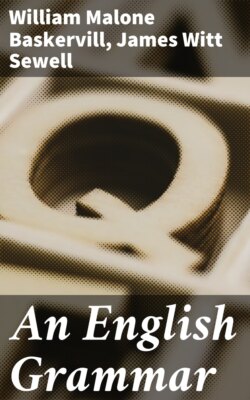Читать книгу An English Grammar - James Witt Sewell - Страница 25
На сайте Литреса книга снята с продажи.
II. Uses of the Objective.
ОглавлениеTable of Contents
59. The objective case is used as follows:—
(1) As the direct object of a verb, naming the person or thing directly receiving the action of the verb: "Woodman, spare that tree!"
(2) As the indirect object of a verb, naming the person or thing indirectly affected by the action of the verb: "Give the devil his due."
(3) Adverbially, defining the action of a verb by denoting time, measure, distance, etc. (in the older stages of the language, this took the regular accusative inflection): "Full fathom five thy father lies;" "Cowards die many times before their deaths."
(4) As the second object, completing the verb, and thus becoming part of the predicate in acting upon an object: "Time makes the worst enemies friends;" "Thou makest the storm a calm." In these sentences the real predicates are makes friends, taking the object enemies, and being equivalent to one verb, reconciles; and makest a calm, taking the object storm, and meaning calmest. This is also called the predicate objective or the factitive object.
(5) As the object of a preposition, the word toward which the preposition points, and which it joins to another word: "He must have a long spoon that would eat with the devil."
The preposition sometimes takes the possessive case of a noun, as will be seen in Sec. 68.
(6) In apposition with another objective: "The opinions of this junto were completely controlled by Nicholas Vedder, a patriarch of the village, and landlord of the inn."
